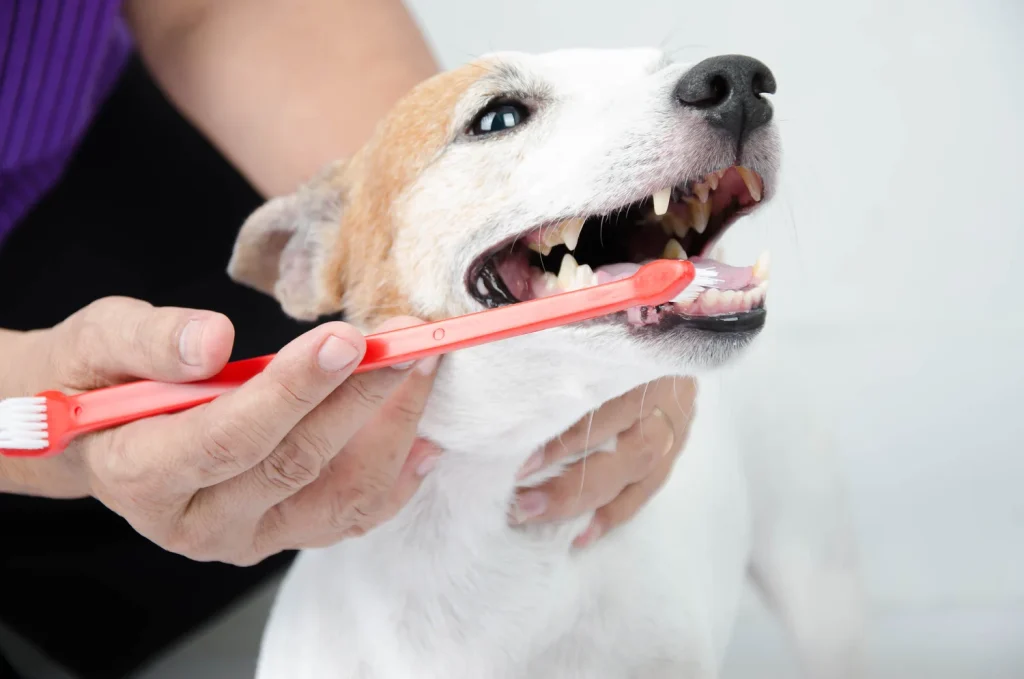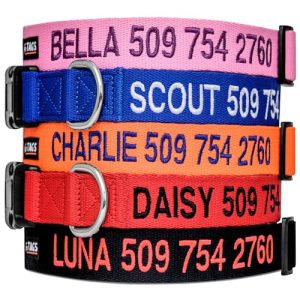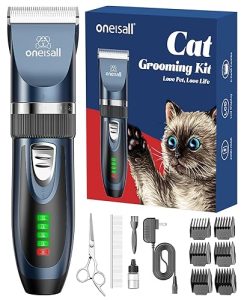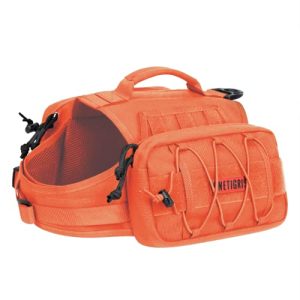Brushing your dog’s teeth can feel like a battle, especially when they refuse to cooperate. You want to keep your furry friend healthy and avoid costly vet visits, but the struggle makes you wonder if it’s even possible.
What if there was a way to make tooth brushing easier and less stressful for both of you? You’ll discover simple, effective tips to help your dog accept teeth cleaning without a fuss. Keep reading to find out how to turn this daily chore into a calm and even enjoyable routine for your pet.
Why Dog Dental Care Matters
Taking care of your dog’s teeth is vital for their overall health. Healthy teeth help dogs eat well and feel good. Ignoring dental care can lead to pain and illness. Teaching how to brush your dog's teeth is important, especially if they resist. Understanding why dental care matters motivates better habits.
Health Risks Of Poor Dental Hygiene
Poor dental hygiene can cause serious health problems for dogs. Bacteria build up in the mouth and lead to gum disease. This can cause bad breath, pain, and tooth loss. Bacteria can enter the bloodstream and affect the heart, kidneys, and liver. Untreated dental issues may shorten your dog’s life. Regular care helps prevent these risks.
Benefits Of Regular Brushing
Brushing your dog's teeth keeps their mouth clean and healthy. It removes plaque and stops tartar build-up. Fresh breath and strong teeth are results of regular brushing. It reduces the chance of painful infections and costly vet visits. Regular brushing makes your dog more comfortable and happy. It also helps you bond with your pet.
Common Reasons Dogs Resist Brushing
Dogs often resist brushing due to fear, discomfort, or unfamiliarity with the process. Sensitivity in their mouth and past bad experiences can also cause refusal. Understanding these reasons helps in finding gentle ways to brush their teeth.
Common Reasons Dogs Resist Brushing Brushing a dog’s teeth can be challenging. Many dogs resist this activity. Understanding their reasons can help ease the process. Let’s explore some common causes.Fear And Anxiety
Dogs can feel anxious about new activities. Brushing might seem scary. The sight and smell of a toothbrush can cause fear. Past negative experiences can also create anxiety. This fear makes them resist brushing.Unfamiliar Sensations
A toothbrush in the mouth feels strange. Dogs are sensitive to unusual touches. The sensation of bristles can surprise them. This unfamiliarity often leads to resistance. Gradual introduction to brushing can help reduce discomfort.Discomfort Or Pain
Dogs might resist due to pain. Dental issues can cause sensitivity. A sore mouth makes brushing painful. It’s crucial to rule out any dental problems first. Regular vet check-ups can identify such issues.Preparing Your Dog For Teeth Brushing
Preparing your dog for teeth brushing builds trust and eases anxiety. Dogs may resist because the experience is new or uncomfortable. Patience and gentle introduction help your dog accept this daily habit.
Starting slow allows your dog to get used to the tools and process. Creating positive associations with brushing makes the routine smoother. The right preparation reduces stress for both you and your dog.
Choosing The Right Toothbrush And Paste
Select a toothbrush designed for dogs. These usually have soft bristles and a small head. Finger brushes can work well for beginners. Use toothpaste made specifically for dogs. Human toothpaste contains ingredients harmful to dogs.
- Soft bristles prevent gum damage.
- Small brush heads fit better in a dog’s mouth.
- Dog toothpaste comes in flavors dogs like.
- Fluoride-free to avoid toxicity.
Creating A Calm Environment
Choose a quiet, comfortable place for brushing. Avoid loud noises and distractions. Speak softly to soothe your dog. Sit or kneel at your dog’s level to appear less threatening.
- Brush after a walk or playtime to release energy.
- Keep sessions short and positive.
- Use treats and praise to reward calm behavior.
Introducing The Brush Gradually
Let your dog sniff and lick the toothbrush and paste first. Gently rub your finger on their teeth and gums to build comfort. Slowly add the toothbrush, starting with a few strokes on the front teeth.
- Start with brief sessions of 10-15 seconds.
- Increase brushing time as your dog relaxes.
- Reward your dog after each session with a treat or praise.
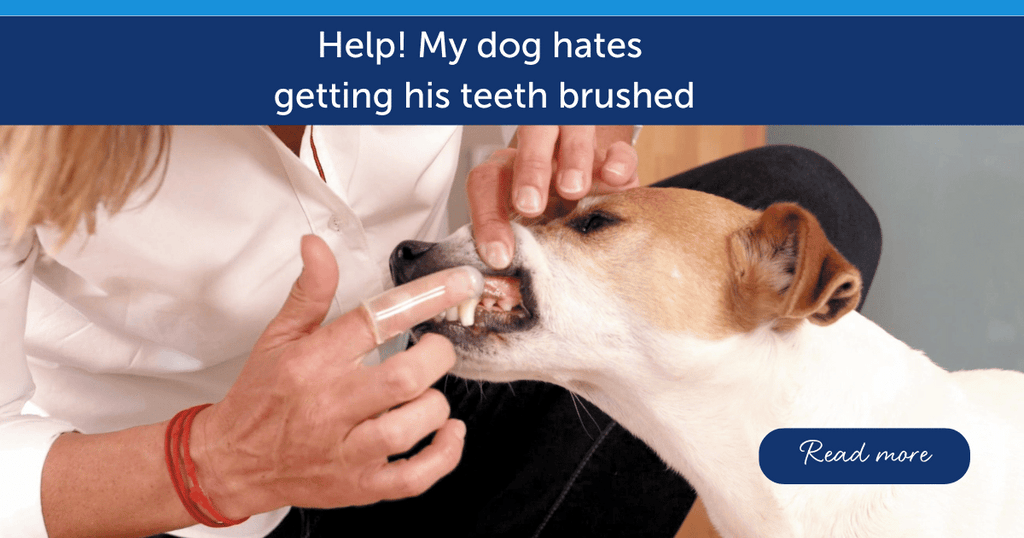
Credit: www.adaptil.co.uk
Step-by-step Brushing Techniques
Brushing your dog’s teeth can be tough if they resist. Patience and the right technique help. Start by making your dog calm and ready. Use gentle motions to clean teeth effectively. Learn how to handle pushback without stress.
Getting Your Dog Comfortable
Choose a quiet place for brushing. Let your dog sniff the toothbrush and toothpaste. Gently touch their lips and teeth with your fingers. Praise and reward with treats for calm behavior. Practice short sessions to build trust over time.
Proper Brushing Motions
Use a soft-bristled toothbrush made for dogs. Brush at a 45-degree angle to the gum line. Move the brush in small circles. Focus on the outside of the teeth first. Spend extra time on back teeth where plaque builds.
Dealing With Resistance
Stay calm if your dog pulls away. Pause and try again later or next day. Use treats to encourage cooperation. Avoid forcing the brush inside the mouth. Keep sessions short and positive to reduce fear.
Alternative Dental Care Methods
Brushing a dog’s teeth is not always easy. Some dogs simply refuse to cooperate. Thankfully, there are other ways to keep your dog’s teeth clean and healthy. These alternative dental care methods help maintain good oral hygiene without stressing your pet.
Dental Chews And Toys
Dental chews and toys help remove plaque and tartar naturally. Dogs enjoy chewing, which massages their gums and cleans their teeth. Choose chews approved by veterinarians to ensure safety. Regular use reduces bad breath and keeps teeth stronger.
Water Additives And Sprays
Water additives and sprays fight bacteria in your dog’s mouth. They are easy to use and cause no discomfort. Additives go in drinking water, while sprays apply directly to teeth and gums. Both freshen breath and reduce plaque build-up effectively.
Professional Cleanings
Professional cleanings by a vet remove deep plaque and tartar. This procedure keeps your dog’s mouth healthy and pain-free. Regular cleanings prevent gum disease and tooth loss. It is a safe way to maintain oral health when brushing fails.
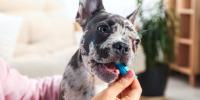
Credit: www.purina.com
Building A Positive Routine
Building a positive routine helps your dog feel safe during teeth brushing. Dogs respond well to calm, steady habits. Creating a daily schedule makes brushing less scary. This routine builds trust and reduces resistance. Patience and kindness are key to success.
Using Treats And Praise
Offer small treats before and after brushing. Treats make your dog see brushing as a reward. Use gentle praise with a soft voice. Say words like “good” or “well done.” This encourages your dog to stay calm and enjoy the process.
Keeping Sessions Short And Frequent
Keep brushing sessions short, about one to two minutes. Short sessions prevent your dog from getting stressed. Brush teeth daily or every other day for best results. Frequent practice helps your dog get used to brushing. Build time slowly as your dog feels more comfortable.
Tracking Progress
Write down each brushing session in a notebook or app. Note how your dog reacts and any improvements. Tracking progress shows what works and what needs change. Celebrate small wins to stay motivated. This helps maintain a positive routine over time.
When To Seek Veterinary Help
Knowing when to seek veterinary help is important for your dog’s dental health. Some signs show that brushing alone is not enough. A vet can check for hidden problems and suggest the best care.
Signs Of Dental Problems
- Bad breath that does not go away
- Red, swollen, or bleeding gums
- Difficulty eating or chewing
- Loose or broken teeth
- Excessive drooling or pawing at the mouth
- Visible tartar buildup or dark spots on teeth
- Change in behavior or irritability
Spotting these signs early can help prevent serious issues. Dogs may hide pain, so careful observation is key.
Professional Advice For Difficult Cases
Some dogs resist brushing no matter what. A veterinarian can offer tailored advice and tools. They might recommend special brushes, tooth wipes, or dental treats.
In tough cases, a vet may suggest professional cleaning. This procedure removes plaque safely and relieves pain. It ensures your dog’s mouth stays healthy and comfortable.

Credit: tomandtoto.co.uk
Frequently Asked Questions
How To Calm A Dog Before Brushing Teeth?
Calm your dog by using gentle praise and petting. Offer treats to create a positive experience. Start slowly and be patient to build trust.
What Tools Help Brush Dog Teeth Easily?
Use a soft-bristled toothbrush or finger brush designed for dogs. Use dog-safe toothpaste with appealing flavors like poultry or peanut butter.
How To Brush Dog Teeth If They Resist?
Start by brushing a few teeth at a time. Use treats and praise after each session. Gradually increase brushing time to build tolerance.
Can Dental Chews Replace Brushing Dog Teeth?
Dental chews help reduce plaque but cannot replace brushing. Regular brushing is essential for complete oral health and preventing dental diseases.
Conclusion
Brushing your dog’s teeth can be tough at first. Patience and gentle care help build trust. Use small steps and take breaks as needed. Try different brushes or flavors to find what suits your dog. Keep the routine short and positive every time.
Healthy teeth mean a happier, healthier pet. Start today, and your dog will thank you with a bright smile. Regular brushing protects against pain and costly vet visits. Keep trying—you and your dog can do this together.

Emily Barker is the founder of ChillDogLife.com, a space dedicated to helping pup parents discover the best dog products, lifestyle tips, and cozy ideas for happier homes.
A lifelong dog lover, Emily combines her passion for pets with a knack for research to share trusted recommendations on everything from toys and furniture to health and everyday care.
Her goal is simple: to make life easier, stylish, and more joyful for dogs and the people who love them.
